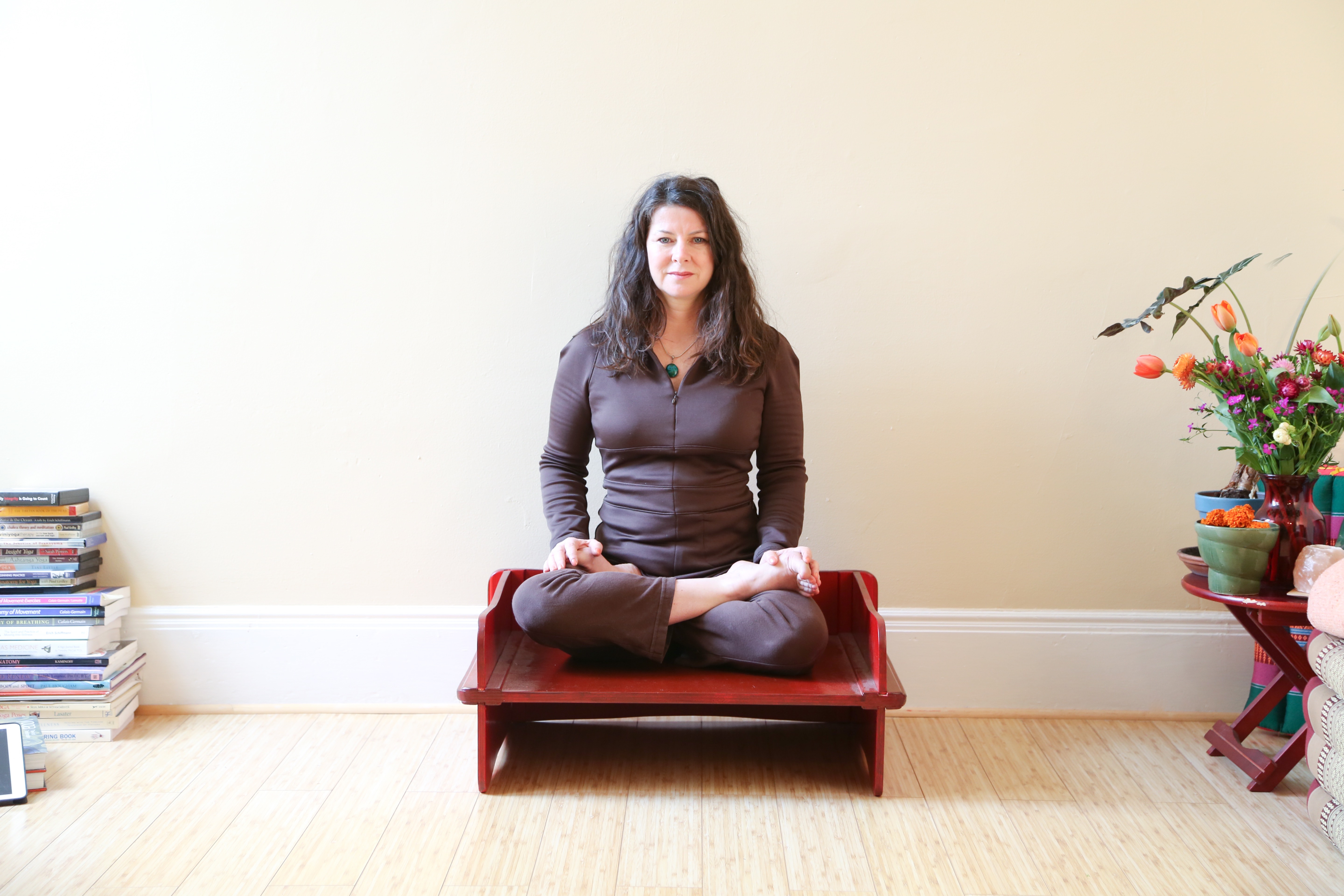 Tears seem to be a part of any spiritual process. Their occurrence is cleansing, although their presence is not always welcome. Ever notice how often yoga stirs the “welling up” kinds of feelings? In silent meditation –or as we sound OM– or flow through our umpteenth sun salute ??
Tears seem to be a part of any spiritual process. Their occurrence is cleansing, although their presence is not always welcome. Ever notice how often yoga stirs the “welling up” kinds of feelings? In silent meditation –or as we sound OM– or flow through our umpteenth sun salute ??
We shed a few tears at some point- or see someone else in a public class discreetly wiping them from their cheeks. We might judge ourselves or someone else, or perhaps feel relief or compassion.
In yoga practice, the reason behind the tears isn’t significant in and of itself. How we use yoga to process the experience is the practice.
Some of the welling up emotions are- sadness, anger, joy. Sometimes an emotion emerges for no apparent reason. Emotions come differently for everyone. So does yoga practice. There is no roadmap for navigating the emotions through the yogic process.
Sometimes, emotions get in the way or feel like failure. Our yoga world is often a place where smiles and strength are rewarded, while tears and mushiness indicate how much spiritual homework we still have left to do. Our ideal yogi self is balanced, graceful, always in control, right? Maybe so, but who is an ideal yogi? Not me, so…. yoga is about finding the truth of who we are. So…
How can breakdowns that occur during practice be transformed into breakthroughs?
Yoga provides a way to skillfully hold space for whatever we experience, including emotional release. These darker emotional visitors aren’t meant to be scary or embarrassing. They can be used as tools or even become our friends in a weird friend sort of way.
Let’s look at how a few such scenarios would unfold in practice.
- Sometimes we step into practice already world-weary and ready to break.
Personal issues such as problems at work or a death in the family can send our feet bolting straight to the mat or our rump straight to the meditation cushion. The poor mind is caught up in the torrential life-storm and barely has a clue where it is being taken.
Our survivalist instinct automatically carries us to refuge- a safe place to cast our shadows and gaze upon them.
- Emotions can also just burst out of nowhere, like during a physical practice when we’re focused and feeling fine.
We’re absorbed in exploring where our feet and breath are. We lean into Warrior 3. One foot is floating above the ground somewhere behind us. Our attention is reinforcing us in our core- we are holding steady- and—
BOOM- waterworks, a rush anger, or gasp of fear. Startling and distracting. Suddenly we’re teetering on the brink of falling off the mat and into an unknown abyss. Things can rapidly destruct from this point. We could rush out of the class and never return, to the class or any yoga. Ever. I’ve seen this happen.
The bright side: Light is what makes shadows visible.
Emotional bursts are real-time, on-the-mat evidence of our wholeness. The components we call mind, body, and spirit are linked.
Our light and ability to “see” is the Siamese twin of our darkness and mystery.
The word “yoga” means “a yoking” of elements together as a union. When we yoke our stronger side to our seemingly weaker one, we return to our whole self. Balanced, with both sides working as one.
So, the deeper we go into the physical body in practice, the more likely emotions will surface. Physical postures (asanas) are the most accessible inroad into the spiritual journey that is the yogic process– in the West, anyway.
Even a short period of asana or meditation on the body can bring a feeling of blissful contentment and a sense of clarity– or drop us into feeling like crap. The mat really is a laboratory- a venue to open and explore- sort out– let go of anything that isn’t serving us and nurture what does.
- If we are working at a suitable physical edge, the most challenging emotions can just flow out along with our thought, sweat and our habits.
On the other hand, if the practice at any time is too strong for us– too long a meditation or out of our physical range– emotions are an alarm signaling our need to pause and find the breath and the floor underneath us.
What do we do when we find ourselves in an emotional scenario on the mat?
The Yoga Sutras suggest, “If there is a release of emotion in a particular asana , the thing to do is relax into the pose, regulate the breathing, and focus on the infinite to become centered in the deepest aspect of one’s self.” [II.46–49]
This includes meditation by the way. Sitting in meditation involves a pose– on the cushion, in a chair, standing.
We’re not actively looking for epiphanies, or forcing catharsis, or trying to have breakthroughs. We’re allowing ourselves to explore our edges and move out of our comfort zones using intuition and compassion.
It’s not all agitation. There are the sweet moments as well.
- Maybe the instructor’s words strike and emotional chord in us or awaken us to beauty.
- Perhaps we’re moved by the experience of sharing practice with others- breathing in the same rhythm, with the sense that we are wordlessly supporting one another just by showing up to class.
Again, what is central to practice is not so much why we are feeling– but how and what we do.
Trust. We’re in this together. And not just with one another. Practice over time shows us that when things get difficult or weird, the process is working.
The day we don’t want to practice is the most important day to do so anyway. Reluctance to proceed is often what we feel when we’re on the brink of transformation. Awkward moments in safe, conscious practice are indications that we’re on the right track.
One last scenario.
- We’re resting into savasana or a restorative pose. With an exhale comes tears. Softening.
Some of the walls that separate us from life just dissolve. Defenses are surrendered and the mind-body rests into support– of the floor, of other yogis, of the “infinite.” There is nothing we need to DO. We are there. In awe.
One reason the practice of yoga is so effective in our lives is that it helps us put down roots and tap into our sources of nourishment. Our swirling layers of thought, feeling, senses, movement are tethered to the ground of our practice.
Yoga is a way to deepen our connection with ourselves, one another and with everything in the universe– things we know about as well as things we’ll never know. We remember that we are free, but also held and not alone.
Namaste.
→ Did you like this post? Sign up below to get updates and other good stuff from me- about once a month. (For free.)

